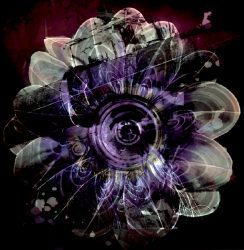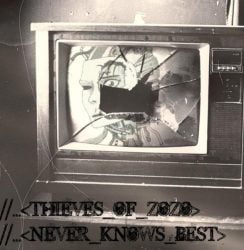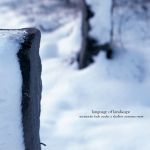Though most of the ambient music albums (unsurprisingly) will appeal to ambient music devotees only, every now and then an album appears that transcends the genre border and also appeals to a more ‘pop’ oriented public – without explicitly becoming pop music. Parks’ new album “Hidden”, is such an album.
Parks is Igor Bystrov from St. Petersburg, Russia. He has been creating music since 1990 as ‘Project Parks’, releasing seven titles until now of which “Umber” (2001) is best known since it has been re-released by Infraction records in 2007. Before starting Parks he studied music, playing the trombone (and) participating in a jazz orchestra.
“Hidden” shows all details of an ambient classic. Bystrow is not only building his atmospheres from layered sounds, but adds some very strong melodies to them, and some sparse rhythms. With the exceptions of September.Koivisto (5’54”), all tracks on Hidden are all between 8 – 10 minutes long, and take their time to develop. The ‘pop ambient’ feel is even stronger on the three tracks containing vocals (apparently female, but since there’s no reference to the singer in the liner notes I would not be very surprised is it turned out to be Igor’s own voice).
Opinions may differ about the vocals, however, depending on your taste. The whispering vocal parts add a melancholic dimension, but personally I find the vocal parts a bit too unstable to be impressive. That’s why I definitely prefer the instrumental tracks.
From his somewhat enigmatig biographical notes on myspace, http://www.myspace.com/parksproject, I learn that Igor is looking for the sound he heard in his dreams, the sounds “that sounded always around when it was possible to catch silence”. With its dreamy atmosphere, ‘Hidden’ clearly succeeds in catching this atmosphere. So it is especially fitting that the album finally concludes with the longest track, called “Perfect Silence”.
Hidden is released by Infraction records (INFX048)
http://www.infractionrecords.com/shop.html
![Parks [hidden] Parks [hidden]](https://www.ambientblog.net/blog/images/parks-hidden.jpg)
Though most of the ambient music albums (unsurprisingly) will appeal to ambient music devotees only, every now and then an album appears that transcends the genre borders and also appeals to a more ‘pop’ oriented public – without explicitly becoming ‘pop music’.
Parks‘ new album, called “[hidden]“, is one of those albums.
Parks is Igor Bystrov from St. Petersburg, Russia. He has been creating music since 1990 as ‘Project Parks’, releasing seven titles until now, of which “Umber” (2001) is relatively well-known since it has been re-released by Infraction Records in 2007.
“[hidden]” shows all signs of becoming an ambient classic. That is, if it can become wider known of course.


![Parks [hidden] Parks [hidden]](https://www.ambientblog.net/blog/images/parks-hidden.jpg)


